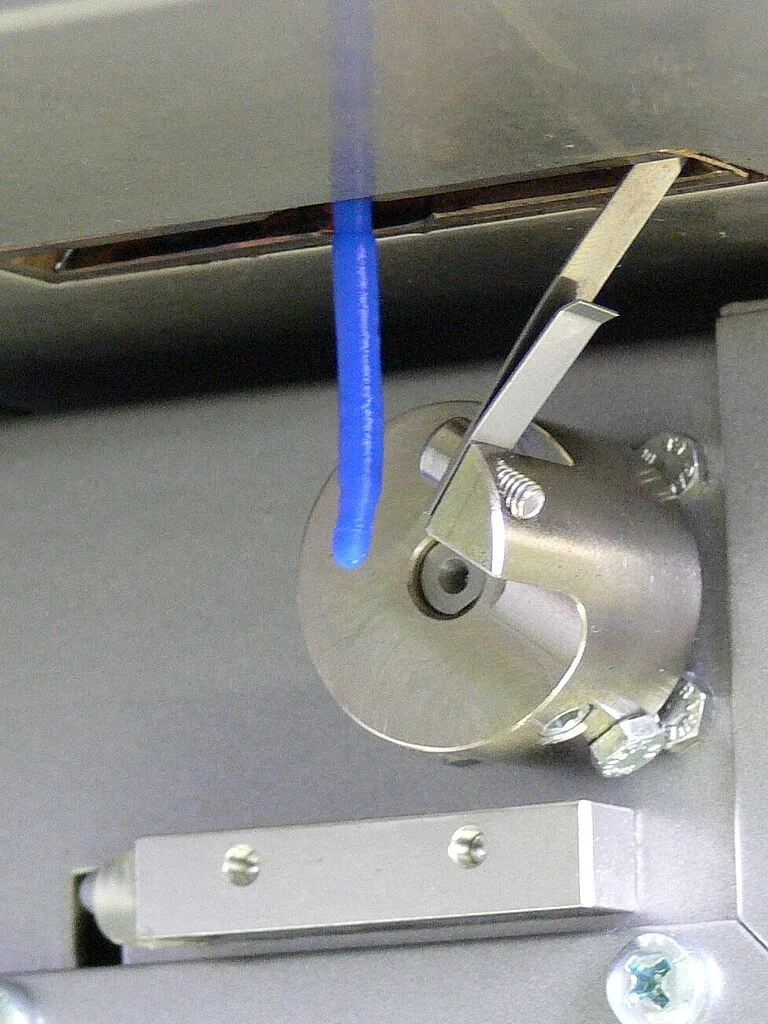The ASTM D1238 test method is used to determine the melt flow index (MFI) of thermoplastic polymers. The ASTM D1238 MFI is a fundamental measurement for
quality control and acceptance of incoming product. It is part of the polymer "id" and is used to verify that its grade is within the required flow range. The ASTM D1238
method is commonly used for polyolefins (polyethylene HDPE, LDPE, LLDPE, polypropylene PP).
ASTM D1238 Test Method
ASTM D1238 covers the measurement of the rate at which a molten resin is extruded through a standard die (2.095 x 8 mm). The tests are conducted under specified
conditions of temperature, load and position of the piston in the barrel, while timed measurements are taken. The standard includes four different test procedures:
A, B, C and D. The main difference between ISO 1133 and ASTM D1238 is that in the latter, procedure C is related to high-flow polyolefins and specifies the use of
a half-size (length and diameter) die, thereby reducing the flow rate. High flow samples can also be tested by using a die plug which is inserted before material charging
and removed before the piston/weight support is removed.
ASTM D1238 Procedure D is concerned with applying different weights to the same sample charge in order to obtain melt mass flow rate (MFR) data under different test conditions.
This can be easily done with an Instron multi-weight melt flow tester which is designed to have up to 5 weights in one test.
This allows for automatic calculation of the flow rate ratio (FRR), which is the ratio of the average flow rate at a higher load to the average flow rate at a lower load.
The FRR is often used to indicate how rheological behavior is affected by the molecular weight distribution of a material.
Plastic Melt Flow Index Tester: Key Recommendations
The Lixian tester is ideal for testing MFI properties of high density PE samples of different masses (2.16, 5 and 21.6 Kg) at 190°C.
It is equipped with an encoder, a motorized weight lifter that automatically handles and applies the masses, and automatically cuts the extruded material at precise intervals.
Our unique material compaction load cell feature, which controls forces up to 750 N, allows you to define and accurately monitor the desired material softening level before testing.
This is crucial, as the material preheating phase can significantly affect the repeatability of the measurement.
In addition, we recommend using 50 measurement point acquisitions with the encoder to obtain the highest accuracy for each weight.
You can then use the melt mass flow rates obtained with the different weights to calculate the flow ratio for each weight combination.
At the end of the test, we recommend a thorough cleaning of the instrument using our automatic barrel cleaning device to reduce test times and optimize quality control processes.
For chemically aggressive materials, such as PVC or fluoropolymers, we have developed a special corrosion-resistant kit (barrel, die, piston) that is available with all our instruments.



